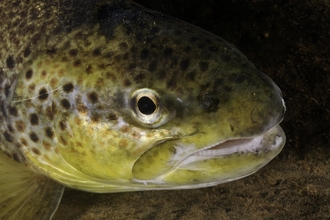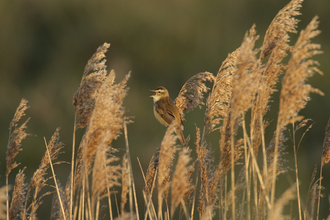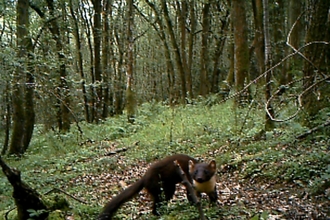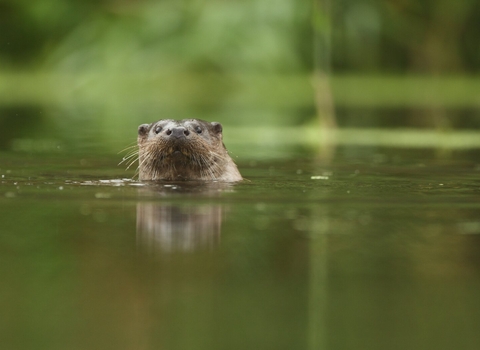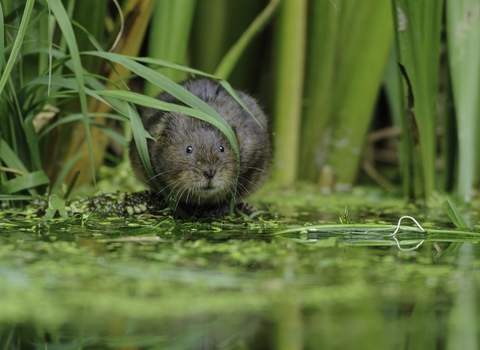
Terry Whittaker/2020VISION
Mammals
Water provides unique challenges and opportunities to the mammal world. It provides immediate shelter from predators and can be a rich food source, without water life would be impossible.
Unlike fish, certain mammals have made partial adaptations for a semi-aquatic lifestyle. Becoming powerful swimmers with modified body shapes brings benefits whether hunter or prey. To be able to swim, even if poorly, means a riverside territory becomes safer and food can be reached.
The fortunes of riverine mammals in the UK has been mixed - water pollution, habitat loss, predation by man and loss to invasive species has been catastrophic.
Many mammals will frequent pools and river sides - deer to drink, rats to forage or the fox using the river to safely move about it’s territory in the sheltering trees. But few species are truly comfortable with the water and here is an introduction to 6 of them:
European otter
A large, excellent swimmer with webbed feet, enlarged lungs, sensitive whiskers for feeling for prey. Along with the ability to see underwater marks out the otter for top predator status.
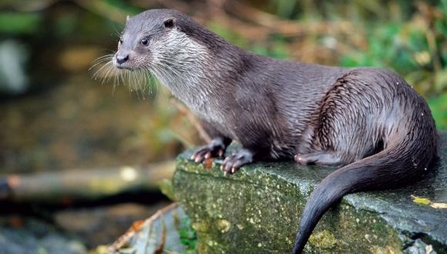
Otters primarily eat fish but will consume frogs, young water birds and other mammals too. Happy enough in big rivers but will equally take a shine to small pools and can be a nuisance to commercial fisheries. Good fencing and other non-lethal measures can help to manage the impacts.
Otters are secretive, their holts where the young kits are born are very rarely found. Paw prints or spraints mark territory boundaries and help us understand otter diets are frequently found on bridge piers or sheltered river banks even in the heart of towns such as Shrewsbury. Read more about Otter ecology here.
Please log your otter records online by clicking here!
All records collected will be forwarded to the Shropshire Mammal Group and will be logged in the county records database.
For information on what to do if you find a dead otter, please please visit the University of Cardiff Otter Project.
Find out more about otters
Watch SWT's mammal expert and Shropshire Mammal Group chairman Stuart talking about otters in this video.
Water vole
A Water vole male can live out the whole of its brief lifespan, up to 18 months, on less than 100m of river bank.
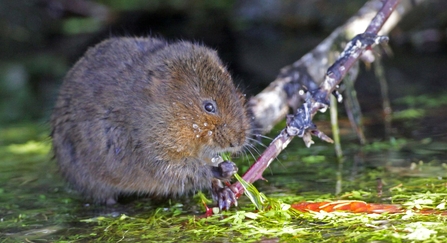
(c) Margaret Holland
The colony bankside is a pathway network and burrow complex with a secret underwater entrance. The riverside strip will provide a wide range of plants for the Water vole to eat, the water course itself a useful sanctuary in case of alarm, the vole diving to conceal itself in a turbid flurry of silt.
Since the 1980’s the population in the UK has been in dire decline. Habitat loss, poor water quality, inappropriate management and predator pressure have contributed to a worrying prospect of the total removal of the Water vole from the native wildlife map.
Water shrew
Like other shrews the Water shrew excretes a mild toxin when it bites its invertebrate prey that help subdue it.
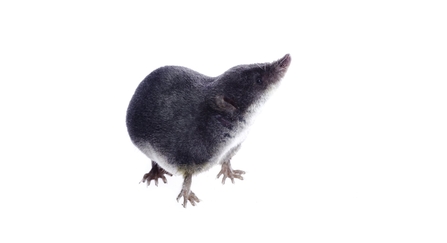
Niall Benvie/2020VISION
Freshwater shrimp, caddisfly larvae, hog-louse and frogs all succumb to this busy insectivore. For larger prey the Water shrew will attack from behind and drag the victim to the shore.
Water shrews are the largest species of shrew and though widely distributed across the UK they are less numerous and therefore rarely recorded. Bristly hair along the underside of the tail and on each hind toe helps it to swim, when the shrew dives it has to counter-act the air that is trapped in its fine fur which makes it buoyant and silvery in colour. Short lived they are easy prey for owls, pike and mink. Their burrows therefore have underwater entrances to help evade detection. Read more about the water shrew
American mink
The first American mink were brought to the British Isles in the 1920’s to be reared for fur.
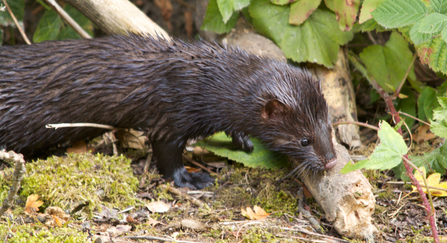
(c) Tom Hibbert
The mink is a member of the same family as the otter and once it escaped it quite quickly made itself at home.
It is rarely found far from water though catches more of its prey on land than the otter. It is smaller, with darker hair, spikey when just emerged from the water and a competent swimmer. Mink consume large amounts of fish and can be a threat to fish stocks and have been seen as a contributory cause of Water vole decline. Mink will use a den close by the water to shelter their brood, producing 5 to 6 young each year. Read more
Daubenton's bat
Daubenton's bat uses a shallow, fluttering wing beat in its flyting style to bring it closer to a water surface.
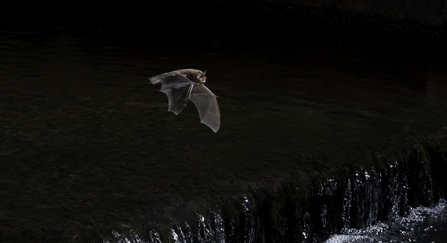
(c) Dale Sutton/2020vision
In this way is can pick up emerging mayflies and even surfacing small fish. Its large feet with splayed toes come in handy when performing these wave top raids.
Unlike our other adapted river mammals where the adaptations to a semi-aquatic lifestyle are obvious the Daubenton's bat has evolved subtle modifications to allow it to hunt more effectively over water than any other bat. Read more here.
Beaver
Hunted to extinction by the late 12th Century in the British Isles for its pelt, we are delighted that the Eurasian beaver is back!

(c) David Parkyn/ Cornwall Wildlife Trust
First re-introduced in small captive colonies over the last few years, recently, yet controversially, beavers have been found in the wild.
The beaver is a plant eating mammal that has evolved to be very much at home in a wetland . They are large members of the Rodent family, they will re-shape a wetland in a way that ensures they can move around safely and forage easily, lumbering on land they are powerful swimmers. Much work is to be done before the Eurasian beaver is successfully re-established in the British Isles, it is a very different world from the one it was extinguished from 900 years ago, but then this is a true test of whether we cam make space for nature in our modern world. Read more here.
Watch Welsh Beaver Officer Alicia talking about beaver ecology and their status in the UK.

